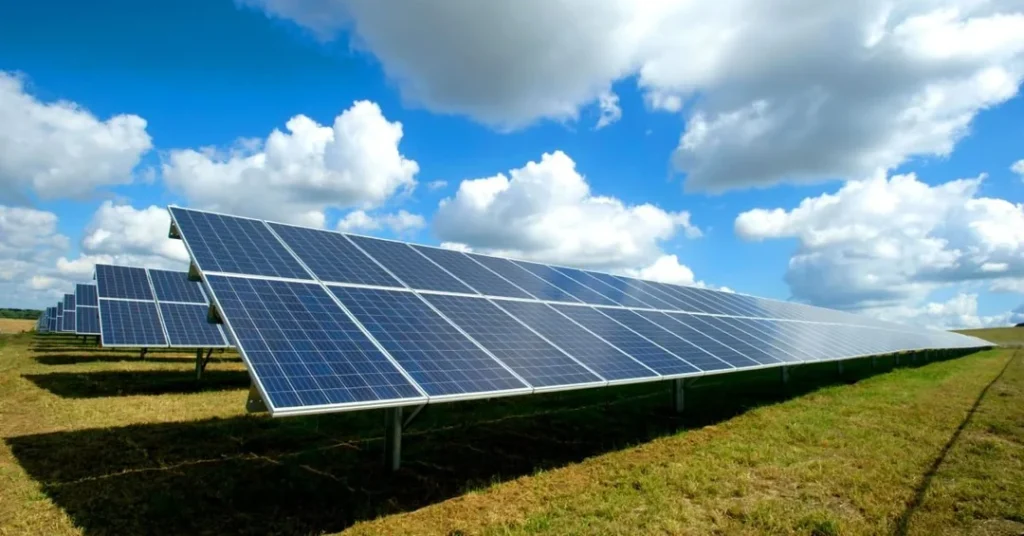China’s Solar Build Accelerates in October as Developers Push Toward a Potential 300 GW Year

• China added 12.6 GW of new solar in October, a 30% jump from September as installations rebounded after policy driven uncertainty.
• Year-to-date build reached 252.87 GW, up 39% from the same period in 2024, positioning China to match or exceed last year’s record.
• Analysts say year-end commissioning could lift 2025 additions toward 300 GW, shaping global supply demand dynamics for solar, storage, and grid investment.
Beijing Pushes Through Policy Turbulence
China’s solar developers accelerated activity in October, installing 12.6 gigawatts of new capacity, according to fresh data from the National Energy Administration (NEA). The monthly figure marked a 30% rise from September and provided the clearest indication yet that the sector is regaining traction after a mid-year slowdown tied to the country’s new renewable pricing mechanism.
The revised pricing system, which removed guaranteed returns on new projects, had prompted developers to rush installations in the first half of the year. The surge was followed by a drop-off as investors recalibrated expectations, financing structures and grid-connection strategies in response to the policy shift. October’s rebound suggests that developers have now adjusted to the new framework and are pushing ahead with commissioning schedules.
A Record-Setting Trajectory Despite Mid-Year Volatility
From January through October, China connected 252.87 GW of new solar capacity — a 39% increase over the same period in 2024. The scale is significant even in the context of China’s rapid solar expansion, which has helped drive global oversupply in modules and prompted a structural rethinking of grid planning and energy market reform.
If monthly additions maintain their current momentum, 2025’s total installations could match last year’s record 277 GW. Analysts are already raising expectations. With year-end commissioning historically strong, some forecasts project additions closer to 300 GW — a level that would reinforce China’s dominance across solar manufacturing, deployment and system integration.
Pricing Reform Reshapes Investor Behaviour
The NEA’s new pricing mechanism is reshaping how developers structure projects. The removal of guaranteed returns has pushed more investment toward utility-scale projects with stronger transmission access and toward regions where provincial incentives remain stable. It has also accelerated conversations around grid reform, market-based dispatch, and the integration of long-duration storage.
Developers who accelerated work in the first half of the year were responding to a clear financial incentive: complete projects before pricing changes took effect. The subsequent slowdown reflected caution, particularly among mid-tier developers who rely heavily on debt financing. As the market absorbs the implications of the policy shift, October’s data reflects renewed clarity rather than a temporary surge.
RELATED ARTICLE: China Launches Climate Prediction Model for Wind and Solar Power
Implications for Global Markets and Supply Chains
China’s installation trajectory matters well beyond its borders. Higher deployment rates absorb some of the country’s vast manufacturing output, easing pressure on export markets that have faced falling prices and rising political scrutiny. A 300 GW installation year would alter demand forecasts for polysilicon, inverters, grid equipment and utility-scale storage, with ripple effects across Asia, Europe and emerging markets.
For global buyers, the data provides insight into China’s policy priorities. Even with pricing reform aimed at cooling speculative development, the scale of monthly additions shows that authorities continue to view solar as a core pillar of the country’s energy transition, industrial strategy and regional economic development.
What Executives Should Track
For C-suite leaders, investors and policymakers, several issues warrant close attention. The first is the pace of grid investment. China’s utilities are under pressure to accelerate ultra-high-voltage transmission expansion, improve curtailment management and integrate storage at a scale proportional to the surge in solar output.
Second is financing. As guaranteed returns disappear, project economics hinge more on regional policies and the evolution of China’s electricity market. The shift will influence how capital is deployed, which provinces attract investment, and how developers manage balance-sheet risk.
Finally, the trajectory of year-end installations will offer a clearer picture of whether 2025 becomes another record-breaking year. If additions approach 300 GW, China’s solar sector will retain its position as the single largest driver of global clean-energy deployment — shaping price floors, supply-demand balances and technology development worldwide.
A Year That Sets the Global Pace
China’s October data shows a market regaining confidence after policy turbulence. With more than 250 GW added in ten months and developers accelerating into the final stretch of the year, the country is on track for another extraordinary build-out. Whatever the final figure, China’s 2025 solar expansion will shape global energy transition pathways, influencing investment flows, manufacturing strategies and the pace at which grids around the world adapt to an era of mass electrification.
Follow ESG News on LinkedIn












